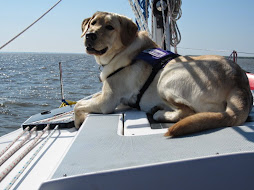If you take your dog for a walk in order to get him to go potty, you may have noticed that it sometimes takes longer and you have to walk farther in order to get him to go. By taking him for a walk to go potty, you're actually teaching him to hold it for as long as possible, especially if you have a tendency to go inside right after he goes. Your dog wants to go for a walk, so when you take him inside soon after he eliminates, you punishing him for going rather than rewarding him with a nice long walk.
How to train your dog to go on cue
You will need a lot of patience to train your dog to eliminate on cue, especially if you have an older dog who is used to going on walks to do his business. With patience, however, you will be successful in training your dog.
- When you go outside, keep your dog confined to one area and wait. You may want to have him on leash. Make sure you stand still and don't walk around with your dog. When they start sniffing around and look like they're about to go, give them the cue. We use "get busy" for our current puppies in training, but you can use "go potty" or whatever cue you would like. Just be consistent.
- When your dog goes, give him lots of praise! Clean up if it's not your yard.
- Take your dog for a walk. This is one of the most important steps in training your dog to eliminate on cue, especially if he's used to going for a walk to go potty. Essentially, you are striking a bargain with your dog. He goes potty when and where you ask him to, and then you take him for a walk. To be successful, you must hold up your end of the bargain.
But what do you do if your dog doesn't go when you take him out?
If your dog doesn't go when you take him outside, take him back inside. If you're training a puppy, you may want to crate him for 15-20 minutes. This crate time is not a punishment. It's management so your puppy doesn't go in the house. After 15-20 minutes, take your dog back outside and try again. If he still doesn't go, take him back inside. This is where you'll need lots of patience, because you'll need to repeat this process until your dog does go. But don't get discouraged. With a little patience from you and lots of praise for your dog when he does go, he'll soon learn to go on cue.
All of our service dogs learn to do their business on cue and on any surface. Their partners may not have a yard or even live near a convenient patch of grass for the dog to use to eliminate, so the dog must be comfortable using gravel, sidewalk, asphalt, etc. Because service dogs will be accompanying their partners almost everywhere, they need to be able to go when and where it is convenient. If their partner has a busy work schedule and only has ten minutes to take their service dog out between meetings, they don't have time for a 20 minute walk to make sure their dog goes potty. Or the dog's partner may not be able to take them for a walk, so the dog needs to be able to eliminate on cue. It's just another part of how service dogs fit seamlessly into their partners' lives to assist them to be more independent.









Great job!!! I appreciate your effort and concern for dogs
ReplyDeleteThanks for sharing such valuable information. I find it useful. Share some more information about your training procedure.
Home Dog Trainer
Hi This is nice post,
ReplyDeleteGood info regarding how to train a dog.